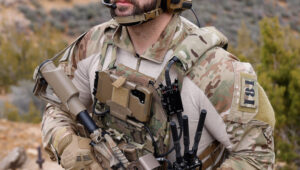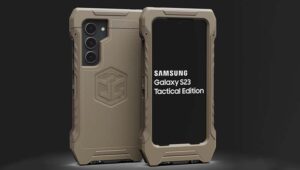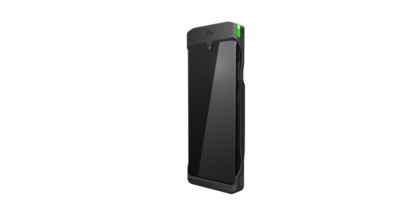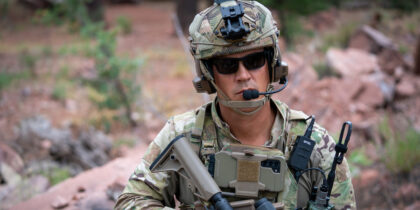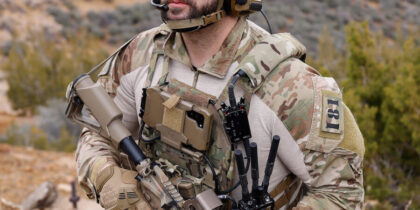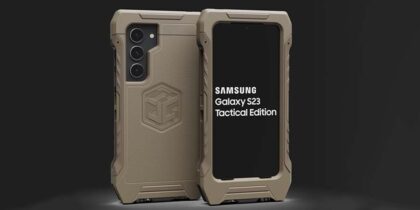“Readiness today” was one of the resounding themes at this year’s Association of the United States Army’s (AUSA) 2018 Annual Meeting, the largest land power exposition and professional development forum in North America. This year, Samsung had the privilege to join thousands of members from military and industry to showcase and discuss the top capabilities and trends the Army can leverage to prepare for today and well into the future.
In addition to modernization, mobilization and readiness, top Army leaders emphasized the need to adjust to the speed and connectivity of the information age. As stated by officials from the Army Futures Command, the Army must work to transform its information enterprise and build on modern capabilities that are sustainable and that make soldiers more effective, while enabling them to return home safely.
Prioritizing Modernization
In an opening press conference at the event, Dr. Mark Esper, Secretary of the Army, and Gen. Mark Milley, Chief of Staff of the Army, shared their renewed focus on the Army’s six modernization priorities, including air and missile defense and command. Number four on that list is control, command and communications networks.
“Readiness and modernization are our guideposts,” Secretary Esper said. “We’re doing everything we can to achieve the priorities we published in June.”
On a more somber note, Milley added, “Amongst all the headlines today, our country is still at war. We have 180,000 [troops] deployed in 140 different countries — on freedom’s frontiers. … What we have been able to do is refocus our efforts. We reorganized the institutional Army to more effectively modernize as we go into the future.”
Samsung is committed to helping the Army realize that vision of modern defense and readiness. Mobile technologies and capabilities will play a significant role in achieving successful outcomes under that vision — especially when it comes to strengthening networks and communications on the battlefield.
Strengthening Networks Through Mobile Innovation
The U.S. Army’s main mission is to achieve battlefield success by providing prompt, sustained land dominance across the full range of military operations and spectrum of conflict in support of combatant commanders. In addition to its main mission, the Army supports operations such as humanitarian ones, base security and counter-drug operations. Some of these missions will require capabilities like full motion video, for example, to distinguish enemies with weapons from civilians. But in a complex, high-intensity tactical environment, the network will be constantly under attack by the adversary. That’s why it’s critical to secure communications so troops can relay information without being intercepted.
Mobilizing an Immersive Training Ecosystem for DoD
Get your free white paper on immersive training for DoD mission advantage. Download Now
Samsung’s Tactical Edition, a mission-ready military smartphone tailored for secure deployment in dangerous environments, delivers a preconfigured software suite designed to support mission-specific communications systems and applications. A soldier can use this specialized device loaded with the military’s Android Tactical Assault Kit (ATAK) software, for example, to show a simplified digital map and icons. The ATAK solution delivers communications, navigation, mapping, surveillance, reconnaissance, battlefield coordination and geospatial information capabilities to improve situational awareness and ensure battlefield readiness. Additionally, this tactical device is equipped with Samsung’s defense-grade security platform, Samsung Knox, so that servicemembers have data protection ingrained in their mobile devices supported by granular access to device features, security options and customization settings.
Customizable tablets offer Army personnel flexibility, agility and security needed for a variety of mission applications. For example, Army flight line operations and maintenance teams can leverage tablets to view real-time inventory and schematics, better use spare parts, manage aircraft diagnostics solutions and more. Electronic Flight Bags (EFBs) and Electronic Knee Boards (EKB) can also minimize or eliminate paper use in cockpits and make real-time data more accessible for flight crews.
Readiness for the Army Workforce of Tomorrow
In preparing the Army workforce for the future — across civilian and defense personnel — mobility will be critical to enabling flexibility without sacrificing security. Mobile solutions like Samsung DeX enable a secure, desktop-like experience without a laptop. Samsung DeX allows users to easily connect their latest Samsung Galaxy smartphones to a monitor, keyboard and mouse for a seamless mobile-to-desktop workflow. This way, Army personnel can be more productive without having to carry around heavy or cumbersome tech. They can also leverage Route1’s MobiKEY for convenient Common Access Card (CAC) or Personal Identity Verification (PIV) card-authenticated access to a virtual desktop via their mobile device.
Overall, this year’s AUSA has provided an abundance of insights. As the Army renews its efforts to achieve modernization and collaborate with industry for the latest technology innovation, Samsung will be ready to help. We look forward to assisting the Army with the best mobile capabilities for readiness today, tomorrow and well into the future.
Learn how Samsung’s mission-ready mobility solutions are helping the Army prepare for the future.


